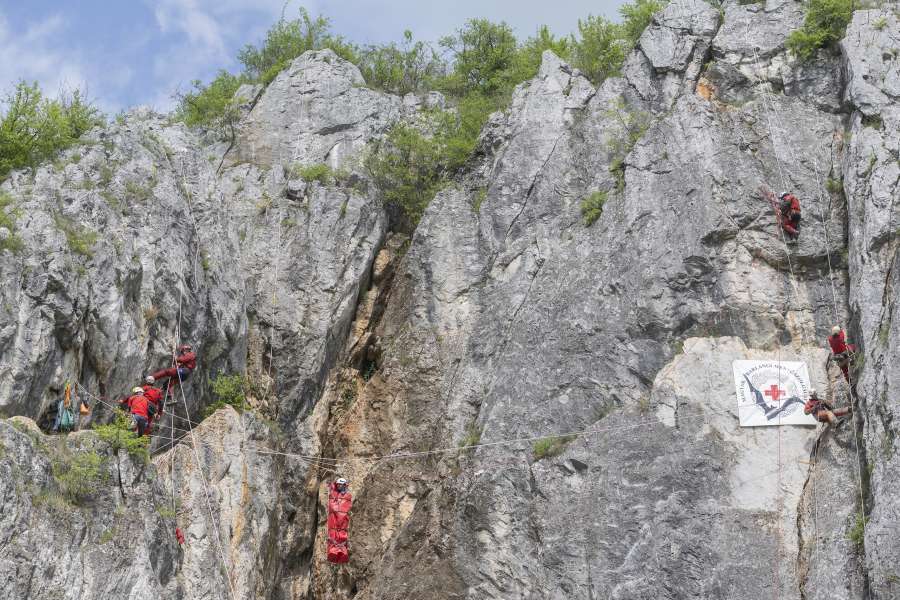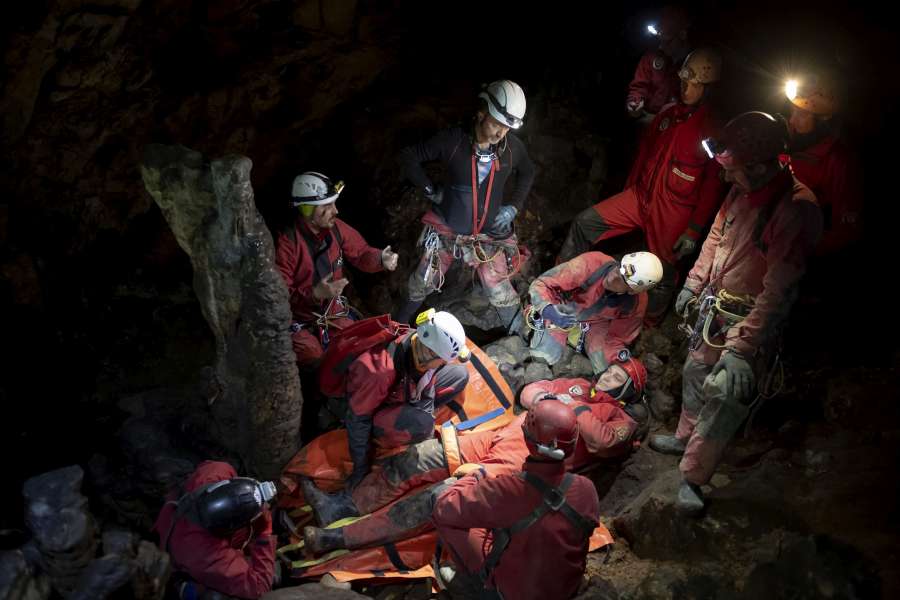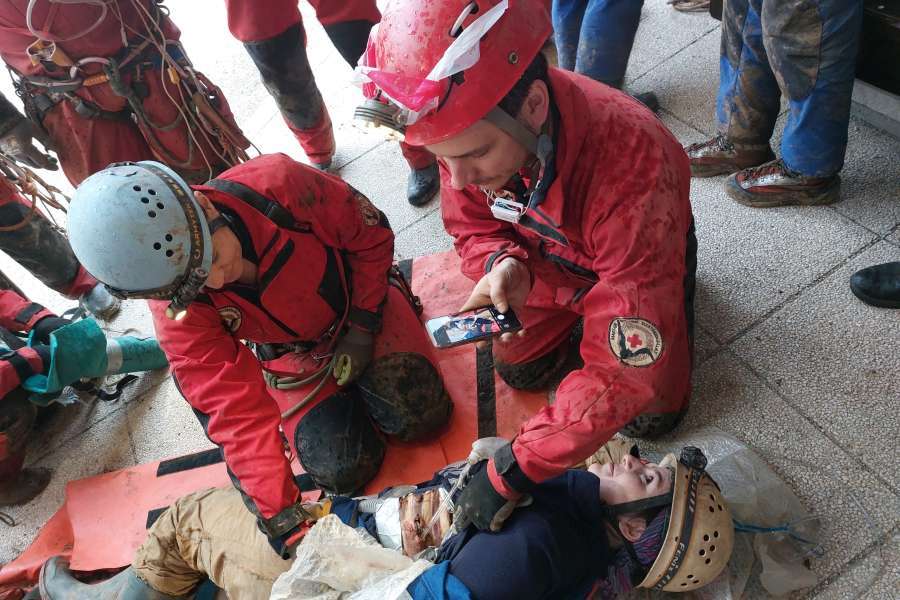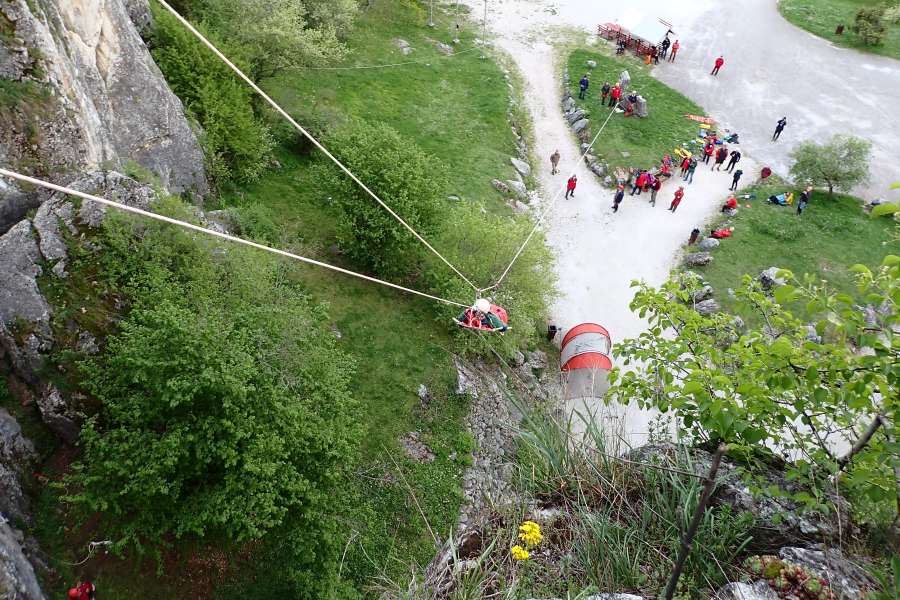18-21.04.2024
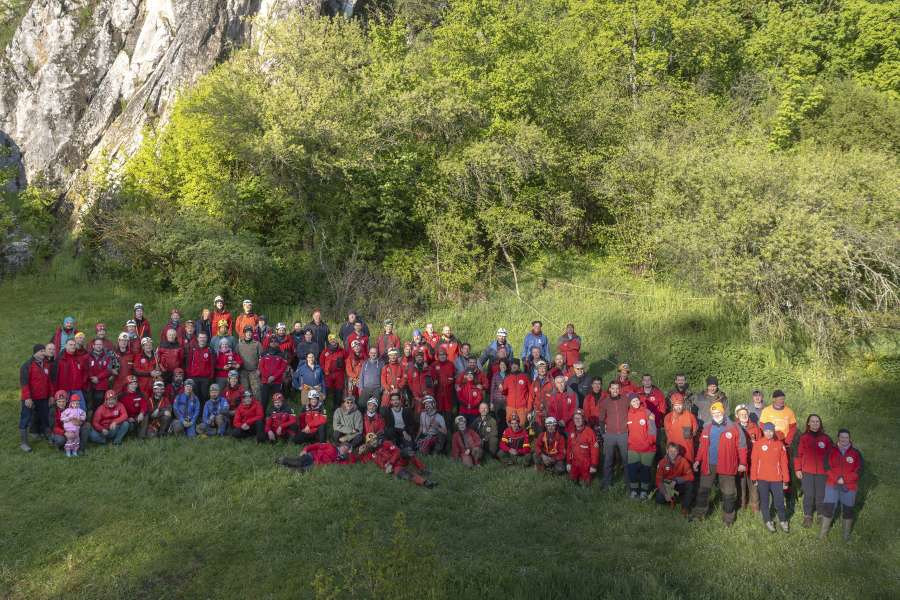 In September 2023, a successful international cave rescue operation was executed in the Morca Cave in Turkey from a depth of over 1,000 meters. The operation, which was widely covered by global media outlets, is detailed on our website: click here.
In September 2023, a successful international cave rescue operation was executed in the Morca Cave in Turkey from a depth of over 1,000 meters. The operation, which was widely covered by global media outlets, is detailed on our website: click here.
Hungary was represented in the operation by two Hungarian rescue services: the Hungarian Cave Rescue Service (BMSZ), joined by the Bakony Cave Rescue Service. After the successful rescue, participants from each country returned home, and the opportunity to reflect on and discuss the details and experiences of the operation was understandably not possible at the scene at that time, however the absence of this important discussion was soon recognised.
In the following months, the need to host an international conference for such discussions, accompanied by practical training exercises, was identified by the leadership of BMSZ. A date for the event was set for spring, and invitations were sent to all organizations that had participated in the rescue.
Registrations for the event were received from eight countries, and numerous members of domestic cave rescue organizations were also able to attend. The Bakony Cave Rescue Service was well-represented, and significant contributions were made to both the professional activities and logistical support of the event. Several members from the Northern Hungarian Cave Rescue Association were also present.
Prominent members from Turkey, who had played central roles in the rescue, were welcomed as honoured guests and friends. The four-day event was organized to include caving opportunities in the caves of the Aggtelek Karst. On the first and last days of the event caving trips were organised, while in the middle two days intensive professional work was conducted. On Friday, stations with different rescue tasks were set up—including on a rock wall, on a steep mountain slope, and in cave—where injury management and rope rescue solutions had to be applied, strictly following medical advice tailored to the simulated conditions of the injured.
On Saturday, for the main event a fictional rescue scenario, unknown even to the participants in advance, was tasked, generating many questions and anticipation among the attendees. According to the scenario, a so called "Long Tour", a popular caving trip conducted through the Baradla cave, had taken place in the previous day, followed by heavy rainfall on the surface, which induced the flooding of the cave. A single individual managed to reached the surface in the morning to report that the rest of the group remained trapped inside the cave, but there were no further information. Rescue leadership had to be established, teams had to be formed (just like in a real life rescue situation) and injured individuals—simulated across various locations—had to be found and treated according to their condition.
The simulated injuries ranged from an open chest wound (mimicked with a deer's rib) to a leg amputation, prompting surprise and, at times, amusement among participants of the event. However, none of this were felt at the surface. At the cave entrance, those not directly involved in the rescue, were provided only with limited updates from the disciplined rescue leaders about what was happening in the cave.
During the successful “rescue,” seven simulated casualties were located and brought to the surface. By late afternoon/early evening, the exercise was completed. Feedback from participants during the subsequent debriefing indicated that the task had been both challenging and beneficial and a lot of fun.
The pre-planned tasks were successfully kept confidential by the organizing team, who observed with interest the constructive and often different solutions implemented by the different groups—many of which led to equally successful results. At the conclusion of the event, and in the following days, participants expressed their satisfaction with the activity and indicated a desire to further continue these cooperation.
During a possible international rescue, BMSZ considers maintaining an active relationship with local cave rescuers highly important. This way the effective collaboration with different language groups will provide the fastest possible response in unexpected situations. Familiarity with the technical and personnel capabilities of each other allows for much more efficient and effective assistance in emergency situations.



